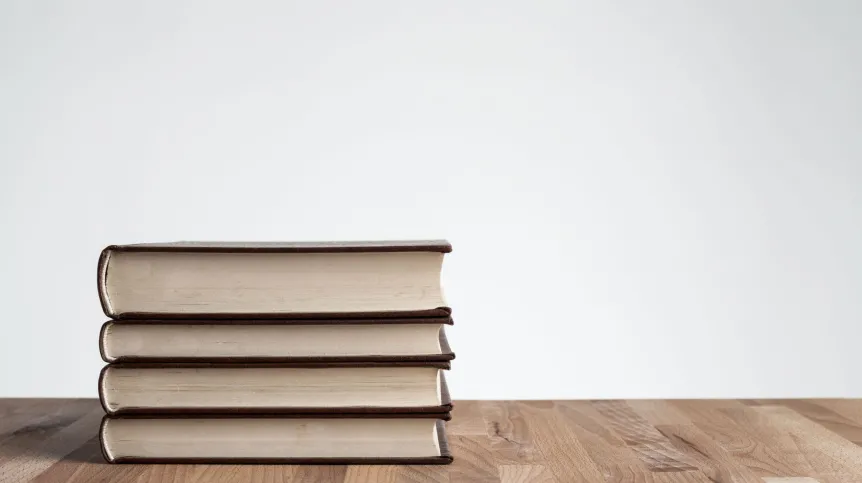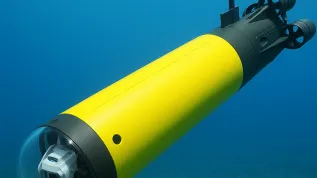
Only half of people are still active scientists 10 years after their first scientific publication. After 20 years, only one third of people remain in science, according to an analysis conducted by Polish researchers. Patterns of leaving science are similar in different countries.
Professor Marek Kwiek and Dr. Łukasz Szymula from Adam Mickiewicz University in Poznań analysed patterns of leaving science in different countries around the world. They used raw metadata from Scopus, a global bibliometric database of scientific publications and their citations.
The researchers focused on STEMM (science, technology, engineering, mathematics, and medicine). The study did not include researchers from the humanities and social sciences, because not all of their scientific publications were indexed in Scopus. The study was published in the journal Higher Education (https://doi.org/10.1007/s10734-024-01284-0), and its results were discussed in Nature.
SCIENTIST - A PERSON WHO CONTINUES TO PUBLISH
For the purposes of the study, the researchers assumed that a scientist in STEMM is a person who publishes scientific papers. Anyone who had stopped publishing was considered to have dropped out of science, regardless of where they were employed.
'We searched the database for several hundred thousand scientists who began publishing in 2000, and we observed their achievements in subsequent years', Professor Kwiek told PAP. The researchers observed how the number of people who were actively publishing gradually decreased in this group. For comparison, they also looked at 11 cohorts of people who had their first scientific publications in subsequent years, until 2010. In total, this was 2.1 million scientists from 38 OECD countries, says Professor Kwiek.
DISAPPEARING SCIENTISTS
'As it turns out, the patterns of leaving science are quite similar around the world. Regardless of whether we are talking about Germany, France or the United States, it turns out that on average one third of those who publish stop publishing after five years, half - after 10 years, and two thirds - after 20 years. Averaging the results from all the analysed countries - after 20 years we are left with approximately one third of scientists', Professor Kwiek sums up.
A LOT OR TOO FEW?
Is it a lot or too few? 'In my opinion, it is a huge success of investing in science that after 10 years of work we still have half of the scientists. At first I thought that these hundreds of thousands of people who give up an active scientific career are a waste of energy and funds spent on science, a human tragedy, and finally a big problem for science policy. Now, however, I see that there is still a huge percentage of people who try their hand at science - and stay in it. We should be happy about that’, Kwiek says.
He adds: ’Young people can become disillusioned with conducting scientific research over time. Science has a terrible work-life balance, access to research funding is extremely competitive, the pressure to publish is increasing, salaries for young scientists are low, and salaries outside of science are radically better. In addition, the forces pulling young people away from science in selected disciplines - from companies - are significant. If, a decade after their first publication, half of young scientists are still publishing - it means that these people are coping very well with stress, underfunding and the challenges of a globally changing academic career’.
MEN AND WOMEN
The researchers also compared how women and men leave science. 'It seemed to us that women would have less chance of staying in STEMM sciences. Something that was the rule for the generation 20 years ago is no longer a valid pattern today', Kwiek says. He explains that in 'more mathematical' fields: mathematics, computer science, physics, astronomy, engineering - once women enter science (i.e., when they start publishing), they largely stay, and the rate at which they give up publishing is almost identical to that of men.
The situation is slightly different in those disciplines where the percentage of women is already large - biochemistry, genetic engineering, medicine, biology and neuroscience. There, women's chances of staying in science are still lower than men's. As a result, women still leave science faster than men and in greater percentages.
Professor Kwiek points out that the depth of changes is visible in publication databases as time passes. 'With each subsequent cohort of scientists (and we analysed eleven of them), the gender differences in resignations from publishing are getting smaller. Among younger people, the rate of women and men leaving science is becoming equal', he says.
THE YOUNGEST ARE LEAVING FASTER
'For the youngest cohort, the chances of leaving science are clearly greater than for the oldest cohort. Processes in academic science are accelerating: people are entering and leaving it faster and faster. What has a decisive influence on these processes: the attractiveness of the world of work outside academia, or the unattractiveness of the academic world? We do not know for sure. This needs to be investigated, and here we will need interviews with scientists and large surveys', the professor says.
POLISH SCIENTISTS REMAIN
Researchers from Adam Mickiewicz University have prepared an interactive map that allows scientists to compare withdrawals from science by country, field, gender, year of first scientific publication.
'Polish researchers are most often in first or second place among countries where the chances of staying in science are the greatest. For example, the chances of scientists who started publishing in 2000 in computer science or chemistry staying in academia after 20 years are almost twice higher in Poland than in the US or Germany', says Professor Kwiek.
'The academic environment in Poland is not as competitive as in Anglo-Saxon countries. We are not as pressured at work by the management of our laboratories, and at less prestigious universities we do not have to worry about employment in the following year as much as scientists from Anglo-Saxon countries do', he adds. In his opinion, work at Polish universities is still quite peaceful.
In addition, traditional 'pull-off factors' do not have a big impact on people in science in Poland. Industry, the private sector, government, philanthropy, and state administration do not take people away from science as often as in the most developed economies. 'Scientists with doctorates in STEMM fields are therefore largely condemned to work in academia if they want to fully use their knowledge', Kwiek continues.
'In Germany (chemistry) or the United States (computer science), people do not leave academic science because they are not doing well there. They leave because they have radically better development opportunities and better financial conditions outside. And in Poland, at our universities - we are calmly surviving', he adds.
Kwiek believes that this has both advantages and disadvantages. For example, the good effects are that Poland has scientists who know the Polish higher education system very well, educate many doctoral candidates, have many years of experience. And there is a certain institutional memory of how to do science well. The problem, however, is that researchers very rarely quit their jobs, and as a result there are not many new positions for young people.
'In Poland, universities are relatively good, sometimes maybe even a bit too good, especially for scientists with poor international achievements. It should never be the case that everyone who enters science - stays there forever. However, the opposite situation is not beneficial either - when a large percentage of young people quickly leave science and take up work in other sectors. Each country must find its balance. And Poland, unfortunately, is looking for this balance in conditions of permanent underfunding of scientific research', Kwiek says. (PAP)
PAP - Science in Poland, Ludwika Tomala
lt/ zan/ mhr/ kap/
tr. RL













